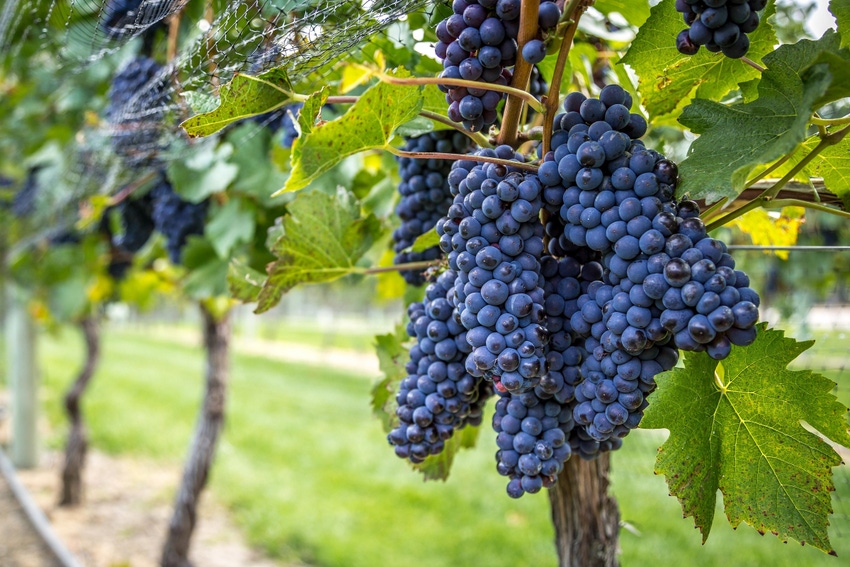
Despite indications of this year’s slightly larger than average crop, overall, the market for California’s wine grape crop appeared to be stable as the harvest continued into mid-September, reports Glenn Proctor, a partner with wine and grape brokerage firm, Ciatti Company, San Rafael, Calif.
“Signing of long-term contracts and spot sales have been active throughout the year, especially the coastal areas where demand for many varieties, particularly Cabernet Sauvignon, Chardonnay and Pinot Noir, has been relatively strong,” he says.
Last year’s light Central Coast crop has stimulated good buying activity there for Cabernet Sauvignon, Chardonnay and Pinot Noir. Proctor estimates production in some premium areas for those varieties fell nearly 30 percent below 2014 levels. At the same time, case good sales of bottles priced above $10 have continued to grow, Proctor notes.
Although the market for Central Valley grapes has been better than expected, it hasn’t been nearly as active as on the coast.
Among the actively-selling Central Valley varieties in the last few months have been Cabernet Sauvignon, Chardonnay, Pinot Gris and Sauvignon Blanc, he says.
“Some of the early-harvested crop in the southern area of the Valley, like Chardonnay, has been light,” Proctor says. “So buyers replaced some of that with Chardonnay from Lodi and other areas where that variety was still available.”
Increasing interest in certain Central Valley grapes is also coming from coastal buyers, he notes.
With prices of coastal grapes continuing to rise, some wineries are left with a decision of either raising their bottle prices or buying supply from other areas of the state. This has caused some wineries that have traditionally bought fruit in higher-priced areas to look at more affordable areas of the state to hold their bottle price and maintain margins. Other wineries, though, are maintaining their current sourcing and considering whether to reduce margins or, perhaps, raise bottle price to maintain margins.
“Some wineries are developing programs where their wines include a certain percentage of coastal varieties and a certain percentage of Central Valley grapes and pricing their wines at, say, $14 a bottle,” Proctor says.
Meanwhile, in mid-September, the industry was still assessing the likely size of this year’s California wine grape crop.
In most areas, production appears to be higher than it did in late July and early, Proctor notes.
Last year, California growers harvested a little over 3.7 million tons of wine grapes. That compares to the USDA forecast for Aug. 1 of this year, which predicted the state’s 2016 crush would total 3.9 million tons.
“That feels about right,” says Proctor, whose firm estimates this year’s wine grape will come in at 3.9 to 4 million tons. “On the coast the crop appears to be a little larger than expected. Earlier, some North Coast growers were concerned about clusters that were a little loose. But those berries have since sized up pretty well to compensate for the earlier lighter weights.
“Production in the Central Valley will probably be more average this year, except for the southern region which is likely to be average or less. There some early-harvest Chardonnay yields were coming in 20 percent to 25 percent under previous estimates. It will be hard to make up for that difference in the total Chardonnay crop.”
Prices of coastal wine grapes, which traditionally are higher than Central Valley fruit, remain strong, Proctor notes.
Following last year’s light coastal wine grape crop, where production of most major coastal varieties fell 25 percent to 30 percent below 2014 levels, contract and spot market grape prices this year remain strong and are up across the board from a year ago, Proctor reports.
Also, bulk wines are in short supply on the coast.
“Before last year’s crush, wineries weren’t worried much about supply after the three previous very large crops,” Proctor says. “Now, they are more concerned strategically about having grapes for the coastal brands they’re trying to grow. So supply, once considered a little bit of a dirty word, has become more attractive to them.”
About the Author(s)
You May Also Like




